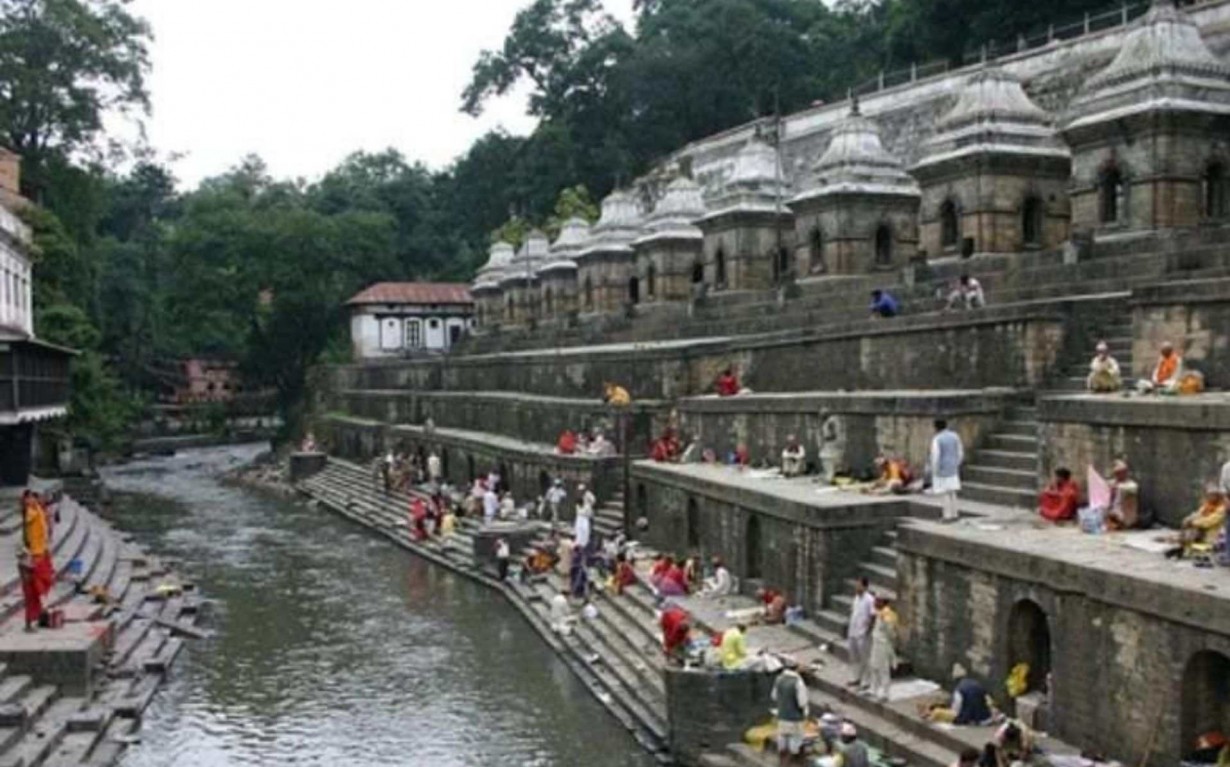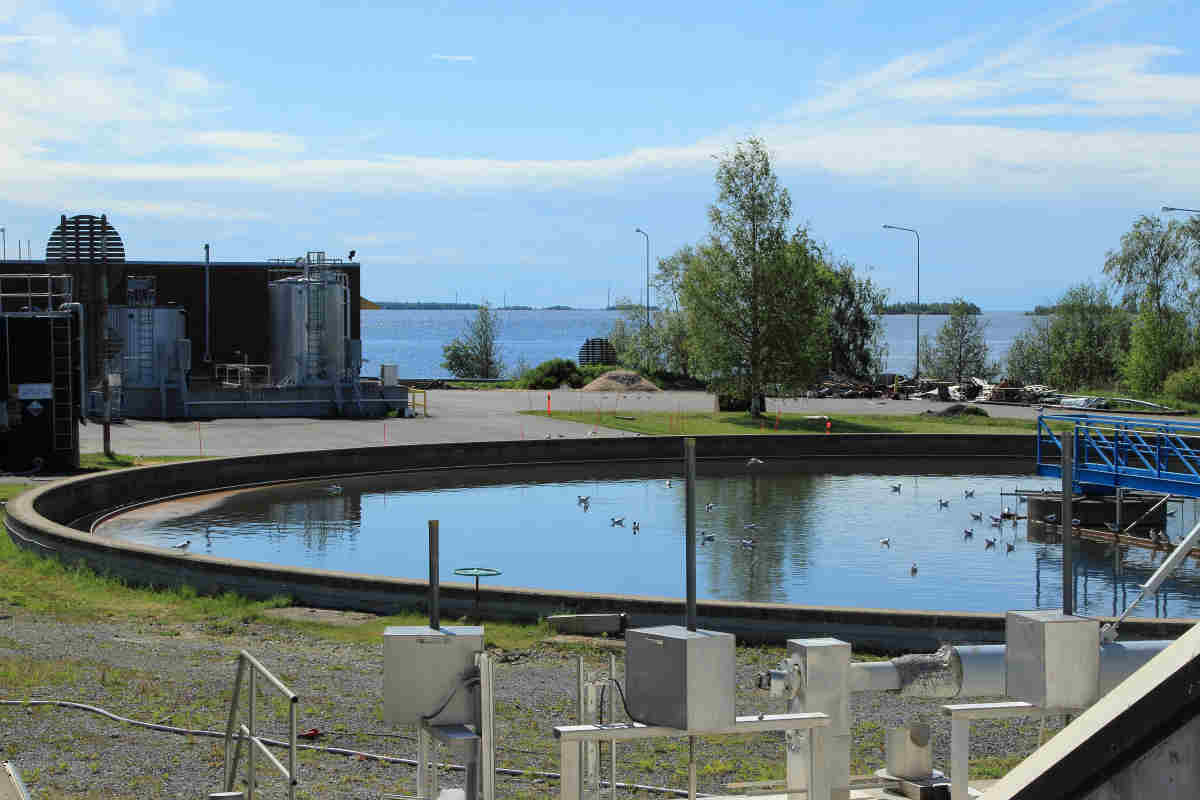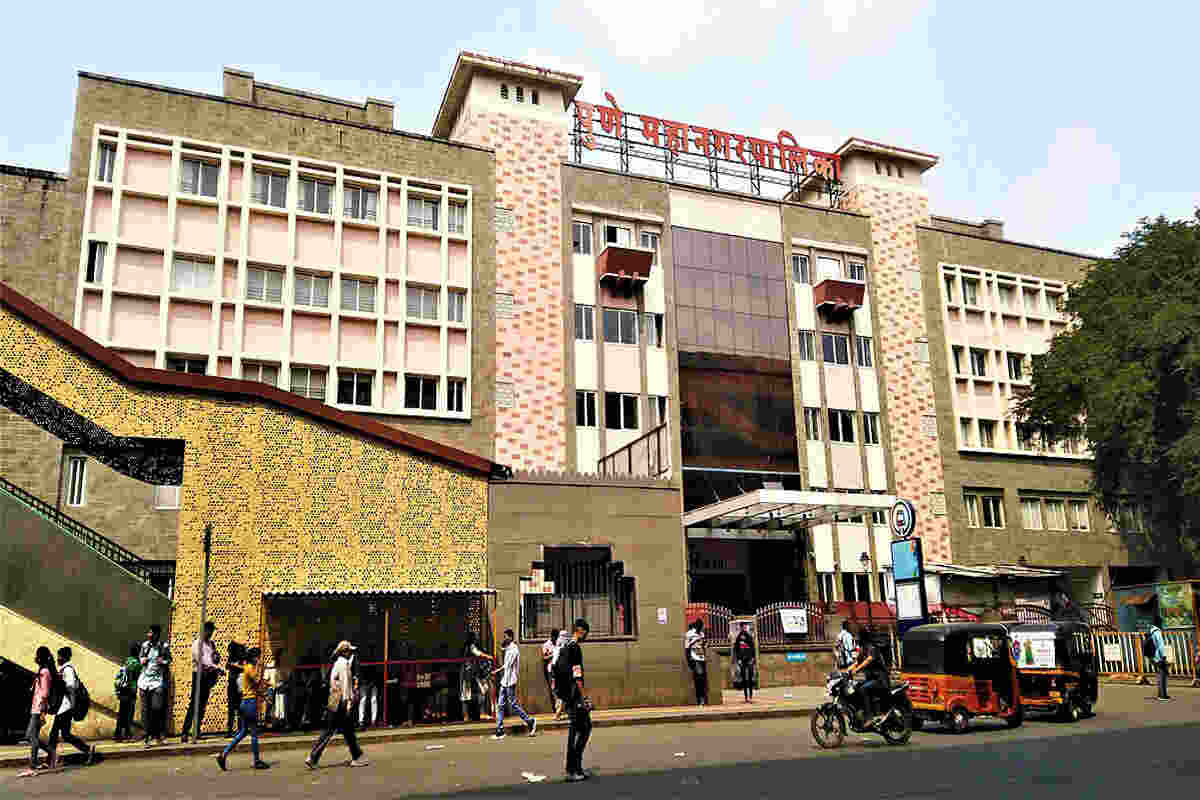Saving The River Bagmati
Kathmandu Valley used to be a big lake. Bagmati River formed the big lake over 1 million years ago. The Bagmati River is considered a source of Nepalese civilisation and urbanization.
It flows through the Kathmandu Valley of Nepal, the 2,000-to 3,000-metre range is the southern boundary of the “Middle Hills” across Nepal, an important cultural boundary between distinct Nepalese and more Indian cultures and languages, as well as a major geological feature.
The Bagmati River Delta, including the Kathmandu Valley, lies between the much wider Gandaki Delta to the west and the Kosi Basin to the east. Without glacial sources, the flow is more dependent on rainfall, becoming very low during the hot season, then peaking during the monsoon season.
The river Bagmati flows 128.6 m/km into Shivapuri Area and 2.7 m/km into Kathmandu. The river runs at a gradient of 16.4 m/km in Mahabharat, the gradient is reduced to 3.4 m/km Siwaliks and further in the Terai to 1.1 m/km.
Water flowing in the river is deemed sacred and is used for spiritual and ceremonial rituals in the several significant temples on the banks of the river. The river flows through Kathmandu, the political and economic hub of the world, as well through the gateway to tourism in Nepal.
It supplies most of the city’s drinking water in its upper basin and generates hydropower in the Bagmati River basin by the Kulekhani, which is the only reservoir-type hydroelectric power station in Nepal with an installed capacity of 60 MW, with two units of 30 MW each.
The expected annual energy generation capacity of this plant is 165 GWH as primary energy and 46 GWH as secondary energy, contributing about 7% to the Integrated Nepal Power System (INPS)
POLLUTION SOURCES IN THE DYING BAGMATI
The waters are still crystal-clear on the hills of Shivapuri-Nagarjun, where they come from a lion-headed river. But as it passes through the forests and down into Sundarijal, the river becomes slow, and its direction becomes one of growing depletion.
There are large amounts of untreated sewage (21,000 kg) on the bagmati River, and there are high rates of contamination of the river mainly due to the large population of the city (population of Kathmandu in 2019 was 1,376,000 a 3.46% increase from 2018).
Many people who live in Kathmandu dump personal waste into the river even though clean river water is a treasure for the residents of the Kathmandu valley.
Today it is only safe to assume that the rivers are clean at their source and water pollution is a big problem in the valley. The Hanumante khola, the Dhobi Khola, the Tukucha khola and the Bishnumati khola, have been the most polluted ones, amongst others.
MODERNIZATION AFFECTING THE BAGMATI
The construction of concrete houses has begun because of the modernization. People take sand from the rivers and deepen them. The surface of the soil then descends, and waste flows into the rivers. It was the origin of river pollution.
Mismanagement of the housing and local industries drainage network at a time of increasing urbanization. Even the hospital outlets flow into the rivers directly. 600 tonnes daily — is dumped directly in the river. And thus, the valley’s major river bagmati is not the natural resource of importance anymore.
The cycles put in motion by polluting waste deplete the oxygen (oxygen concentration was assumed to be at 90 percent of the saturation level, or 7.53 mg/ml) in the water required for the survival of river plants and safe microorganisms.
There is virtually no water in the rivers during the dry season. The wastes in the river have killed a large number of living organisms as the nutrients they need to survive have been replaced by massive quantities of arsenic, chlorine, phosphorus , potassium, suspended solids and human excreta.
The Biochemical oxygen demand (BOD), total nitrogen (TN) and total phosphorus (TP) concentrations ranged from 8.41 to 29.74 mg/L, 6.7 to 128.96 mg/L and 0.06 to 1.5 mg/L, respectively in urban areas.
Experts point to environmental danger, widespread sand mining, growing solid pollution, public lack of understanding, severe government incompetence and bad policy for the degradation of the entire Valley flow, alongside heavy industrial operations. The river is biodead in Kathmandu Valley and consists of heavily contaminated sewage that puts the health of the population and users of the river below the river.
The main threat to infrastructure, agriculture, people’s lives, and their livelihoods throughout the basin are frequent floods and river bank erosion.
INITIATIVES FOR RESCUING THE HOLY BAGMATI
EFFORTS OF THE GOVERNMENT TO REGAIN THE PRIDE OF NEPAL
Development efforts by government to improve basin water safety. The Government now understands the importance of resolving the problems by getting away from this approach to silo management and embracing IWRM members. A quantification of existing rights for use and distribution is pursued under the new Water Management Act (1993).
- Government also ensure resource management and environmental security. In order to develop appropriate legal and institutional frameworks to implement the IWRM approach, the bagmati River Basin Improvement Project (BRBIP) shall help develop a model replicable in other Basin areas of the country.
- In 2009, the Bagmati Plan of Action (2009-2014) was approved by the government to address the poor state of the river in Kathmandu Valley and it’s affluent. The Design for a ‘safe, natural, balanced and vibrant river network’ with a long list of initiatives aimed jointly at preserving and conserving the environment of the valley river.
- The Bagmati Integrated Watershed Management Program (BIWM), and Technology Watershed in 1986 (WOCAT 2009), inaugurated by the Soil Conservation Department. The aim of this program is to enhance the efficiency of the Bagmati Ecosystem by engaging communities and people in the ecosystem. BIWMP has managed to develop a partnership between Community institutions , agencies and district authorities using participatory methods for planning, implementing and monitoring.
- On May 18, 2013, under the initiative of former chief secretary Leela mani Poudyal, The Bagmati Mega Clean Up Campaign was started. Every Saturday, Nepal Army, Nepal Police and General Public gather to clean the waste and sewage from the river.
NGO’S COLLABORATION FOR THE BAGMATI
Since local groups and NGOs – including the WaterAid charity – have decided to collaborate with Friends to try to save Nepal’s most holy river, the bagmati River Project has entered a further level.
- Friends of the Bagmati (FOB) is a group of people from various backgrounds, who have come together to restore the environment of the Bagmati and other rivers in Nepal with their common concern.
It is the objective of the friends to restore the Bagmati and the other streams of the valley by bringing local consciousness to light in various ways by emphasizing the sacredness of the Bagmati. FOB has made a promise to protect the Bagmati River from pollution and other challenges, its rich economic , cultural and heritage value.
- In the Kathmandu Valley of the bagmati Basin, the focus will be on gathering and disposing of solid wastes by the Women’s Environmental Preservation Committee (WEPCO). They also launched successful initiatives for households and industries in the recycling and composting of waste on the banks of the river.
- Sewerage / Restoration Project (BASP) of the Bagmati Region. A sewage treatment plant was installed upstream of the Temple of Pashupatinath on the eastern bank of Bagmati, despite the Hindus’ religious importance of the river.
- The Nepal River Conservation Trust (NRCT) started the Bagmati River Festival on 11 August 2001 in cooperation with other organizations concerned. It is an annual event that raises global awareness of the Bagmati ‘s problems and acts as a forum for reform.
HELP FROM THE WORLD ORGANISATIONS
Nepal also got support of some world organisations for Bagmati river which are:
- The UN Park, the Bagmati Nature Park (BNP) formation, construction of wastewater and water treatment plants and the Bagmati Clean-up Mega Campaign were successful in raising awareness of the dire state of the river and the clean-up of river areas.
- Published in 1994, the Bagmati Basin Management Strategy (BBMS). This research was jointly financed by the Japanese Grant Fund and the World Bank. The BBMS has drawn up a 14-point plan to address key challenges including new treatment schemes for sewerage, improving management of solid and liquid waste and restoring the historical and cultural areas along the river.
- The Government of Nepal took a World Bank loan in the early 1970s for developing an improved drinking water and sewerage system in Kathmandu.
- The Rivers of Peace Project, an ambitious Global Peace movement by the United Nations, has put together various groups of the Bagmati River society to consider innovative and constructive ways to protect the Holy River for future generations. The Bagmati River Peace Project is an approach to social harmony and to the protection of heritage
CSR PROJECTS BY COMPANIES ON BAGMATI RIVER
There are many companies who give importance to their CSR project to ensure the development of the country with all the business.
- Nepal Telecom in CSR focused on environmental protection is the Bagmati River Clean-Up campaign. The company sends its customers bulk SMS every week, inviting them to take part in the weekly campaign.
- Ncell has been involved with CSR, partnering with DHM and distributing early flood warning SMS warnings to downstream bagmati.

Relating CSR with National Priorities (New Business age)
ISSUES FACED TO KEEP THE BAGMATI ALIVE
- Democratization in Nepal: Democracy in Nepal applied in 1990, and its impact on the bagmati River in the Kathmandu valley is tremendous. Conflict among the different political parties due to urbanisation and welfare of the city resulted in the degradation in the efforts made by different organisations to improve the condition of the holy river.
- Lack of Implementation: Several, authorities were provided with the responsibility of protecting and managing the river conditions, but the confusion among the ministries relating to who would do what tasks leads to the conflicts among the agencies rather than actual enforcement or project implementation.
- Supply in required Funds: As the whole world knows projects of improving the conditions of the environment require a good amount of money in the banks to meet the required help and technologies. But in Nepal raising and getting funds is a difficult task to meet the level of sustainable development.
- Illiteracy among the locals: Locals play an important role in sustaining environment conditions and especially rivers. As, from the historical times we know development takes place near the banks of rivers. In the case of Bagmati River, in the Kathmandu valley where development and population is growing rapidly. Support of the locals is much more essential but lack of knowledge and resources tends to push bagmati to more degradation.
ADAPTING CIRCULAR ECONOMY IN RIVER BAGMATI
As we get to know the importance of the Bagmati river in Nepal, and the problems it is facing to survive in the modern period of urbanization and development of the basins which covers the entire country.
Some important steps to improve the condition of the holy river in the womb of the Himalayas:
- Educate the Locals, is the most important step and must be the first to move forward. As we know how sacred the Bagmati river is, we should try and understand the mentality of the locals and how they worship the holy river. But on the other hand we should mould our ways and try to teach them the equal importance on the livelihood and the conditions of the river, which are necessary to improve for the existence of the river.
- Circular Economy: To achieve sustainability, it is important to create a project that balances a community’s social, environmental and economic interests. In all the countries, social, environmental and economic aspects are equally important and this applies to the rivers. So the projects that provide impacts on all the three aspects of the developing countries. When all these considerations are taken into account in a project, a viable system will be created which will be beneficial to everyone.
As for the countries like Nepal where they give priority to their beautiful culture, so securing their tradition they need to fulfill their social aspect.
Similarly for developing countries, the economy plays an important role in holding their position among the developed countries in the world. And as we all know that tourism plays a major role in the economy of Nepal projects should not affect the tourism sector of the country.
In the end, this article is all about sustaining Bagmati which contributes in the environment sector and all the projects should give major focus on the most important to protect our mother Earth.
ABOUT EARTH5R
Earth5R is an environmental organization from India with its head office at Mumbai. It works with the NGO sector, Companies and helps them conduct environmental corporate social responsibility (CSR) programs across India. Earth5R specializes in circular economy based projects. Earth5R also offers short term and long term environmental courses.
Earth5R’s Global Sustainability Hub is a cross-sector and cross-country collaboration in pursuit of UN Sustainable Development Goals. It is an excellent opportunity for governments and the private sector to engage with communities, use Sustainability-based models to drive economic changes and create social and environmental impact.
Reported by Naman Gupta, edited by Anu Chaudhari



